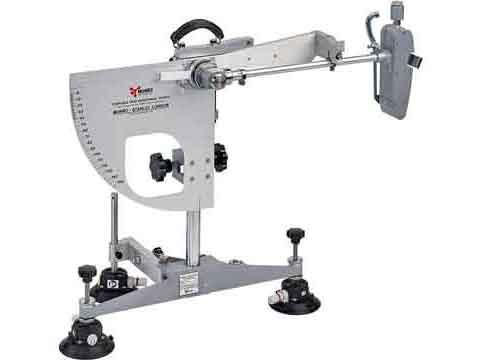What is Surface Slip Resistance and Why is it Important?
What is Surface Slip Resistance and Why is it Important?
Learn about the importance of Surface Slip Resistance in ensuring safety on various surfaces and the factors that affect it.
Introduction: Slip and fall accidents are a common occurrence, leading to numerous injuries and even fatalities. The slip resistance of a surface is a crucial factor in preventing such accidents. Surface slip resistance refers to the friction or traction between the surface and a person's shoe sole, which affects the likelihood of slipping. This article will discuss what surface slip resistance is and why it's important.
Understanding Surface Slip Resistance
Surface slip resistance is a measure of the friction between a surface and a person's shoe sole, which affects the likelihood of slipping. It's a complex and multi-faceted concept that takes into account several factors, including the texture and roughness of the surface, the type of shoe sole, and the presence of moisture. A surface with high slip resistance is less likely to cause a slip and fall accident than a surface with low slip resistance.
Factors that Affect Surface Slip Resistance
There are several factors that can impact the slip resistance of a surface, including:
- Surface Texture: A surface with a rough or textured finish has a higher slip resistance than a smooth surface. This is because the roughness provides more friction between the surface and the shoe sole, reducing the likelihood of slipping.
- Shoe Sole: The type of shoe sole can also affect slip resistance. Shoes with a soft, flexible sole tend to have better grip on surfaces than shoes with a harder sole.
- Moisture: Moisture can greatly reduce the slip resistance of a surface. This is because water acts as a lubricant, reducing friction between the surface and the shoe sole.
- Contaminants: Contaminants such as oil, grease, and dust can also reduce the slip resistance of a surface.
- Angle: The angle of the surface can also impact slip resistance. A surface that slopes downward is more likely to cause a slip and fall accident than a flat surface.
Importance of Surface Slip Resistance
Surface slip resistance is important for several reasons, including:
- Safety: A surface with high slip resistance is less likely to cause a slip and fall accident, which can result in injuries or even fatalities.
- Liability: Property owners and employers have a legal responsibility to provide safe and slip-resistant surfaces for their employees and customers.
- Cost savings: Investing in slip-resistant surfaces can save money in the long run by reducing the risk of slip and fall accidents and the associated costs, such as lawsuits and insurance claims.
Measuring Surface Slip Resistance using Pendulum Test
The pendulum test is one of the most common methods for measuring surface slip resistance. It works by swinging a pendulum over the surface and measuring the force of friction. The pendulum has a rubber sole that simulates the shoe sole, and the angle at which the pendulum stops swinging is used to determine the slip resistance of the surface.
The pendulum test measures the slip resistance of a surface on a scale known as the pendulum test value (PTV), which ranges from 0 to 100. A surface with a PTV of 36 or higher is considered to have good slip resistance, while a surface with a PTV below 36 is considered to have poor slip resistance.

Share
Recent posts
-
What is BS 7976 Pendulum?
Posted 25th June, 2024 -
What are the Laws in the UK Regarding the Danger of Slipping in Public Places
Posted 25th June, 2024 -
What is the pendulum slip rating test?
Posted 25th June, 2024 -
What Are Floor Wear Resistance Ratings?
Posted 30th May, 2024 -
Tile/floor manufacturers? This service is for you
Posted 30th May, 2024 -
Floor Wear Assessment-Types of Flooring
Posted 30th May, 2024
